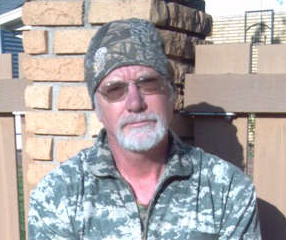
By STEVE GILLILAND
Explore Kansas Outdoors
A few years back, the Hutchinson Zoo was raising money to build a new otter exhibit, and we heard they were looking for an otter pelt to become part of that exhibit.
I contacted the president of the Kansas Fur Harvesters who got them a pelt, but perhaps just as important, I managed to get myself invited to an event there at the zoo where I could display one of the collections of Kansas furbearer pelts owned by the Fur Harvesters.
The event was a Halloween trick-or-treat bash/fundraiser for the otter exhibit called “Boo at the Zoo.”
For three hours, hundreds of kids and parents dressed in Halloween garb flowed through a predetermined route there at the zoo, ending up where I and other volunteers were set up for face painting, etc.
I had the pelts laid out on a long table, making them available for everyone to look at and touch. In their defense, I perceive that most people attending were from the city of Hutchinson and there were probably not a lot of hunters and trappers among them, but I heard some interesting and telling questions from the kids. Many asked “Are these real?” or “Where are their eyes?” Several asked me “You found these already dead, right?” But perhaps the most pointed inquiry came from a girl of ten or twelve who stared intently into my eyes and asked “So how did you feel after you shot these?”
I suppose I should not have expected much serious conversation about hunting or trapping at an event like that where the kids are mostly pre-teen and the parents are tired of whiney kids and just want to get the heck out of Dodge and go home.
I used to think that one would have to go to Detroit, New York City or Washington, D.C. to find people who didn’t have a clue where the hamburger they were eating came from, or where the leather and the fur came from to make the coat with the fur cuffs and collar they wore; I’m now rethinking that.
Kids and parents alike enjoyed looking at the pelts and were intrigued at how soft they were as they ran their hands through the fur. I made sure to point out to all of them how soft and luxurious the skunk fur was, asking them if they had any idea that something so feared could feel so soft. The badger pelt has the claws still intact, and I made it a point to show each person those claws, explaining to them how God designed them with those claws because they dig for the prey animals they eat.
Most wanted to know what animal each pelt came from. Some knew several of them but many hadn’t a clue, calling the coyote pelt a beaver, the beaver pelt a mink and so on. I rattled off the furbearer each pelt came from so many times that night I could name them in my sleep; next time I’ll make labels.
I guess my point to all this is that you really don’t have to go far from home to find people that have no understanding of the merits of hunting and trapping, (or even where their meat, eggs and leather belts come from.)
If we are to see hunting and trapping passed on to our grandchildren and in turn to their kids and so on, we need to make a concerted effort to educate the people around us about the merits of our passions.
There is absolutely no better way to do this than to take non-hunters and trappers along with us on our adventures as we continue to Explore Kansas Outdoors!
Steve can be contacted by email at [email protected].






